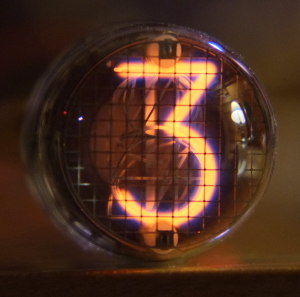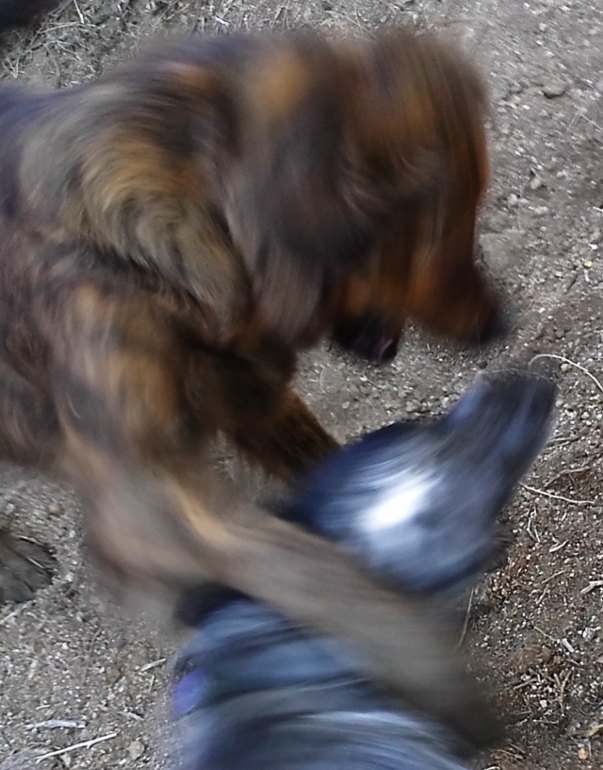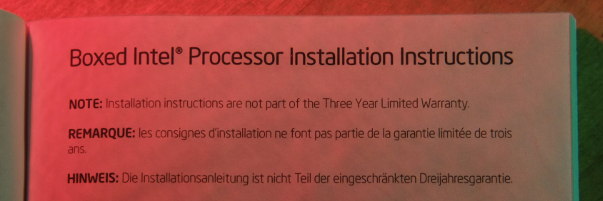September 2014 archive
 I described to a friend this morning what
Nixie tubes
are: neon-filled tubes used in the mid 20th century for numeric displays.
Each tube has ten digit-shaped wire cathodes stacked one behind the other.
My friend (whose attention to detail in all things I find endearing)
asked what sequence the digits are stacked in. I said I didn't know
but I had a few Nixie tubes on hand and I would check. He thought 1
would be first, but maybe 0 or 9. "If it's 3, we're in trouble,"
he said.
I described to a friend this morning what
Nixie tubes
are: neon-filled tubes used in the mid 20th century for numeric displays.
Each tube has ten digit-shaped wire cathodes stacked one behind the other.
My friend (whose attention to detail in all things I find endearing)
asked what sequence the digits are stacked in. I said I didn't know
but I had a few Nixie tubes on hand and I would check. He thought 1
would be first, but maybe 0 or 9. "If it's 3, we're in trouble,"
he said.
 You know the punch line already. A manufacturer's data sheet lists
several cathode stacking orders depending on the model of tube,
but the ones I have start with 3.
You know the punch line already. A manufacturer's data sheet lists
several cathode stacking orders depending on the model of tube,
but the ones I have start with 3.
Wikipedia has a pic of Steve Wozniak wearing a wristwatch with Nixie tubes: cooler (to a certain kind of geek, anyway) than any watch Apple will ever sell. |
Happy nineteenth, everyone. A ton is 2000 pounds in the USA and 2240 in the UK, because a British hundredweight isn't 100 pounds but rather 112 which is (of course) 8 stone.
Stone is a great name for a unit, but you're hearing this from someone who once chose to live in a town named Boulder.
Climbing routes are graded by difficulty, with different systems in use around the world. The systems are largely numeric—except in England, where climbers also use adjectival grades: moderate, difficult, very difficult, severe, hard severe, very severe, hard very severe, extremely severe one, extremely severe two, ... . British routes have both a numeric and an adjectival grade because the two systems take different aspects of a route into account.
A few climbing grade systems date from when climbing standards were not so high (and before specialized climbing shoes were common). The US system was intended to be decimal, with ratings from 5.0 through 5.9—but has since been extended to 5.10, 5.11, and so on. British "severe" is easy by today's standards.
The USA ditched its system of named and colored threat levels in 2010, but the UK still rates the likelihood of terrorist attack as low, moderate, substantial, severe, or critical. I wonder if someday, maybe when everyone and his brother has armed drones, the UK will see fit to add threat levels beyond critical.
Around 20 years ago, while sharing a ledge several hundred feet off the ground with another climber, I had a conversation that started like this:
Tommy: | Where are you from? |
climber: | England. |
Tommy: | I have a question. Can you explain your rating system? |
climber: | I knew you were going to ask that. |
 Take a moment to picture where you were when you first heard that
President Kennedy had been shot. If you're too young for that, picture
where you were upon hearing about the attacks of 11 September 2001.
Take a moment to picture where you were when you first heard that
President Kennedy had been shot. If you're too young for that, picture
where you were upon hearing about the attacks of 11 September 2001.
When I do this, I synthesize a bird's-eye view of the scene rather than recalling what it might have looked like from my own eye level at the time. Visual recollection constructed from an elevated point of view outside one's body is typical in such cases, so I hear.
There are potentially intreresting implications of this quirk of human memory, but I leave them to the reader to consider.
I wonder whether birds do it too. When a bird remembers something that happened while airborne, does he/she picture it from higher still? I installed new motherboard/CPU/memory/OS in my computer today, the same day my snake shed his skin. Not every shed goes well (sometimes the skin doesn't all come off) and I won't list all the stuff that can go wrong with building a computer. But snake and I both had smooth experiences today. The new machine's first boot greeted me with 19:19 at the top of the screen, and no I didn't wait until then on purpose.
I got ten years out of the old machine, more than I expected to when I put it together. The hardware was still working but recent versions of Linux don't seem to like it. Time marches on.
I got AMD CPUs ten years ago because I like supporting underdogs and their speed was competitive. I got Intel this time because they have since trounced AMD in CPU performance. The Intel processor came with a sticker subject to the same dopey license I wrote about a while back. And there's this notice:
 ... which took me a moment to understand. It doesn't mean
that if the pages fall out of the manual, that's not covered.
While napping this afternoon,
I had a dream that included a sequence where I was being chased.
At a point where there was no dialogue but where action got tense,
foreboding minor‑key background music started playing.
I think this means I watch too many movies.
... which took me a moment to understand. It doesn't mean
that if the pages fall out of the manual, that's not covered.
While napping this afternoon,
I had a dream that included a sequence where I was being chased.
At a point where there was no dialogue but where action got tense,
foreboding minor‑key background music started playing.
I think this means I watch too many movies.